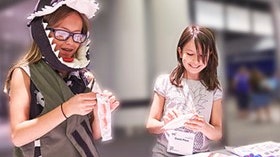Homepage
•
Learning Library
•
Blog
•
4 innovative lesson ideas to bring magic to your makerspace [VIDEO]
Expand breadcrumbs
Expand breadcrumbs
- Learning Library
- Blog
- 4 innovative lesson ideas to bring magic to your makerspace [VIDEO]
- Homepage
- •
- Learning Library
- •
- Blog
- •
- 4 innovative lesson ideas to bring magic to your makerspace [VIDEO]
4 innovative lesson ideas to bring magic to your makerspace [VIDEO]
By Team ISTE
March 2, 2017








